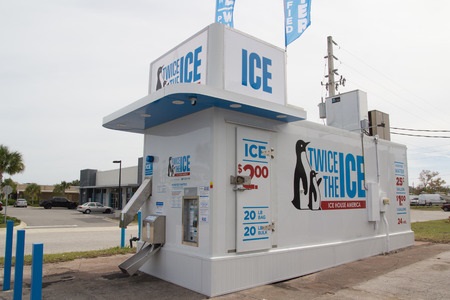23 Types of REITs You Can Invest In
What are REITs?
REITs are Real Estate Investment Trusts. They are corporations that either own or finance real estate.
When a company is formed as a REIT, the entity’s earnings are not taxed, as long as it issues dividends to shareholders equaling at least 90% of its income that would be otherwise taxable.
Because of this requirement, REITs are appealing to investors that want to receive regular dividends.
Investors benefit from owning income-producing properties or mortgages, without having to be involved in the management of those assets.
Equity REITs vs. Mortgage REITs
The vast majority of REITs are Equity REITs, meaning the corporation owns real estate directly.
Typically they focus on one particular sector of the real estate market (e.g. office buildings), but they can diversify into other sectors.
In the case of Mortgage REITs, aka mREITs, the REIT does not actually own real estate. It owns mortgages secured by real estate, either that it bought or originated.
mREITs are also known for sizeable dividends, but are a little more complicated to analyze for the typical real estate investor. They are more of a financial product and dependent on maintaining a spread (net interest margin) between their funding cost and the interest their mortgages bring in.
Public REITs vs. Private REITs
Public REITs are traded on major stock exchanges like the NYSE or NASDAQ. This makes them very liquid; the REIT investor can buy and sell shares throughout the day.
Compare this to directly owning an apartment complex, for instance. It could take months to get from listing the asset to closing and receiving funds.
With Private REITs, the investor still benefits from being hands-off and not involved in the day-to-day management of the real estate assets. However, private REITs are generally not easy to trade.
Typically the prospectus will explain the strategy of the REIT and the holding period when assets will be sold. Needing to sell and exit the investment prior to the stated holding period could be a problem. The investor might have to sell at a discount or have a hard time finding any buyers.
All things being equal, most investors would prefer to be in publicly-traded REITs. The liquidity is an advantage.
Although if the management of a private REIT can present a compelling story as to how they are going to beat the market, some investors are willing to sacrifice the liquidity to chase a higher return.
Each one of our examples in the REIT types below is a publicly-traded REIT.
Types of REITs
Again there is typically nothing forcing a REIT to specialize in one category, but most REITs do specialize anyways.
Investors want to be able to invest their funds in a particular sector and want management to focus most of their attention in being the best-in-class in one particular category.
It is not unusual for a particular REIT to have between 80 and 100% of properties they own be in the same investment type.
1.) Office REITs
Office REITs own high rise office buildings in city centers or low to mid rise buildings in the suburbs. Office REITs tend to be geographically specialized with some just targeting large coastal markets like New York, Boston, and San Francisco, while others are OK with suburban areas as well as secondary markets like Kansas City or Cincinnati.
Examples: NYSE: BXP, NYSE: CUZ
2.) Retail – Shopping Centers REITs
Retail – Shopping Center REITs own regional malls, shopping centers anchored by grocery stores and other big box retailers, as well as strip centers and other multi-tenant retail properties. Some specifically focus on factory outlet malls which tend to be within short driving distance but still outside of major cities.
Examples: NYSE: SPG, NYSE: SKT
3.) Retail – Single Tenant (NNN) REITs
Retail – Single Tenant (NNN) REITs own properties with long-term leases to tenants who operate businesses in standalone buildings. Examples include pharmacies, drive-through restaurants, retailers, automotive repair businesses, and dollar stores. While the income stream can be very predictable, keep in mind that many of the leases are signed for 10 to 15 years with additional tenant 5 year options. This can make it difficult to raise rents in the even of higher-than-expected inflation.
Examples: NYSE: NNN, NYSE: O
4.) Industrial REITs
Industrial REITs own properties where goods are manufactured or stored prior to being distributed to retailers or directly to customers. As the economy has moved to more of a service economy with outsourced overseas manufacturing, more of these properties are warehouses rather than manufacturing plants.
Examples: NASD: ILPT, NYSE: DRE
5.) Lodging / Hotel / Resort REITs
Lodging REITs own hotels and other properties which are rented on a nightly basis. Because rents are always changing, Lodging REITs tend to have more variability in income. Their income is tied to the economic cycle and whether or not tourists and business people are traveling. This is a consumer-focused business which requires a high degree of skilled on-site management. It tends to be more of a hands-on business for the REIT operator and much less passive than some other sectors.
Examples: NYSE: HST, NYSE: APLE
6.) Multi-Family Residential REITs
Multi-Family Residential REITs own large apartment complexes. They tend to have 100 units or more per complex and avoid smaller properties with fewer economies of scale. Many Multi-Family Residential REITs have a geographic focus such as the West Coast or the Sun Belt. A new sub-niche of multi-family residential is build-to-rent home communities. These are neighborhoods or complexes with detached homes which are leased just like apartment communities.
Examples: NYSE: AVB, NYSE: EQR
7.) Student Housing REITs
Student Housing REITs own apartment complexes that lease exclusively to students. Sometimes they are actually built on university-owned land with long-term ground leases. Their leases allow for students to just pay for their room separately from the entire unit. The complexes tend to have amenities designed for students like shared kitchens and study areas. They are treated differently than the multi-family residential REIT category because traditionally the thought has been that college enrollments and demand for rooms tend to always remain high, even in recessions.
Examples: NYSE: ACC
8.) Mobile Home & Recreational Vehicle Park REITs
Mobile Home & RV Park REITs just own the land and the infrastructure like electrical, water and sewer hook-ups at parks. The tenants themselves own their manufactured homes or recreational vehicles, and pay a monthly fee to rent a space. With soaring home prices, these REITs have become quite popular as investors are aware that not everyone can afford single family site-built homes. But people still have to live somewhere and mobile home parks are an affordable option.
Examples: NYSE: ELS, NYSE: SUI
9.) Single Family Residential REITs
Single Family Residential REITs were not a thing until the real estate bubble burst in 2006 and institutional money started buying large numbers of foreclosures. While still just a small fraction of the total single family housing market, these REITs own hundreds of thousands of homes concentrated in growing cities like Orlando, Phoenix, Dallas, Las Vegas, and Charlotte. They tend to buy homes in good school districts with home price and rent growth. One negative compared to other REIT types is that the real estate is spread out over thousands of different properties. It’s not easy to manage and repair homes that are spread out all over huge metro areas.
Examples: NYSE: INVH, NYSE: AMH
10.) Healthcare REITs
Healthcare REITs own hospitals, doctors offices, urgent care, dialysis centers, and other real estate which is focused on healthcare. This is another type of REIT which is thought to be less dependent on economic cycles as life events like births, sickness, deaths, etc. go on regardless of what is happening in the economy.
Examples: NYSE: DOC, NYSE: MPW
11.) Self-Storage REITs
Among all types of REITs, self-storage REITs have some of the highest lease revenues per square foot. Many people either live in an apartment without a garage, or run out of garage space in their home and end up renting a 10′ x 10′ or larger storage space. They then keep renting it for many months or years. With no one sleeping there and no business activity going on, individual spaces are often just a concrete floor and a metal roll-up door.
Examples: NYSE: PSA, NYSE: CUBE
12.) Data Center REITs
Data Center REITs house large server farms inside massive temperature-controlled buildings. They utilize enormous amounts of power and typically like to be located close to fiber lines.
Examples: NYSE: DLR, NYSE: QTS
13.) Infrastructure / Telecom Tower REITs
Infrastructure REITs typically own telecom towers that are leased by multiple major wireless carriers like Verizon, AT&T, and T-Mobile. Other infrastructure like privately-owned power lines and storage terminals could be included in this category, although that type of infrastructure hasn’t really moved over to a REIT structure in a major way yet.
Examples: NYSE: AMT, NYSE: CCI
14.) Entertainment / Movie Theater REITs
Entertainment REITs are own properties whose tenants mainly sell experiences rather than physical goods. They are thought to be more Internet-resistant than your typical consumer-focused retailer. Examples of tenants include movie theaters, privately-owned museums, water parks, and bowling alleys.
Examples: NYSE: EPR
15.) Farmland REITs
Farmland REITs own large rural tracts of land. Their tenants are farmers which lease the land in order to grow various types of crops.
Examples: NASD: LAND, NYSE: FPI
16.) Outdoor Advertising REITs
Outdoor Advertising REITs own outdoor billboards directly, or in some cases, land or easements which generate lease payments from billboard companies. Federal, state, and local laws and land use regulation make it very difficult to build new billboards, so existing billboards are valuable and difficult to replace.
Examples: NYSE: LAMR, NYSE: OUT
17.) Cold Storage REITs
Cold Storage REITs are a unique type of Industrial REIT. They own temperature-controlled warehouses specifically designed to store food.
Examples: NYSE: COLD
18.) Timberland REITs
Timberland REITs own large tracts of land with timber. Their income is mainly generated from selling mature trees to be milled and sold for construction, paper production, and other uses. Because mature trees take 20 to 30 years to grow, timberland REITs have a unique business model compared to other REITs.
Examples: NYSE: WY, NASD: PCH
19.) Casino REITs
Some casinos have spun off their real estate assets — their resort properties — into separate publicly-traded Casino REITs in recent years. They then sign long-term leases to operate their casino businesses at these properties. These REITs tend to have relatively high dividend yields.
Examples: NYSE: VICI, NYSE: GLPI
20.) Education REITs
Education REITs own land and buildings which they lease to charter school operators to operate schools. The charter school business is booming and Education REITs have been a solid source of capital to finance the growth. Currently, charter school properties are mostly owned by private investors and private REITs as the one REIT with a heavy charter school focus has divested those properties.
21.) Prison REITs
Prison REITs own private prisons that are utilized by the Federal government and State governments to operate some prisons. Recently, social justice groups have put a lot of force behind reducing incarcerations and shutting down private prisons. The sector’s existence has been threatened and it’s future does not look bright.
Examples: NYSE: CXW, NYSE: GEO
22.) Diversified or Hybrid REITs
A REIT is considered diversified or hybrid when it crosses over into 2 distinctly different types of business lines. For instance, a REIT that is 60% office buildings and 40% apartments. A REIT that just has a small presence in another sector or goes into 2 related sectors (e.g. Multi Family Residential & Student Housing; Retail – Shopping Centers & Retail – NNN), is usually not considered diversified or hybrid.
Examples: NYSE: ALEX, NYSE: VER
23.) Mortgage REITs
Mortgage REITs, or mREITs, do not own properties directly. They own loans on real estate, as well as mortgage-backed securities (MBS). The difference between their cost of funds and the monthly interest payments they receive is the net interest margin. mREITs tend to have very high dividends.
Examples: NYSE: NLY, NYSE: BXMT
Other types of REITs:
There are a few other REIT categories that don’t currently have any publicly-traded REITs, but might in the future. These niches include Parking Lot REITs, Ghost Kitchen REITs, Cannabis Property REITs, Gym REITs, Marina REITs, ATM REITs, Ice Vending Machine REITs, Vineyard REITs, Whiskey Aging Facility REITs, and Amusement Park REITs, among others. Some of these properties like Gyms and Marinas, can be found in other REITs, but no pure play REITs currently exist in these categories.







